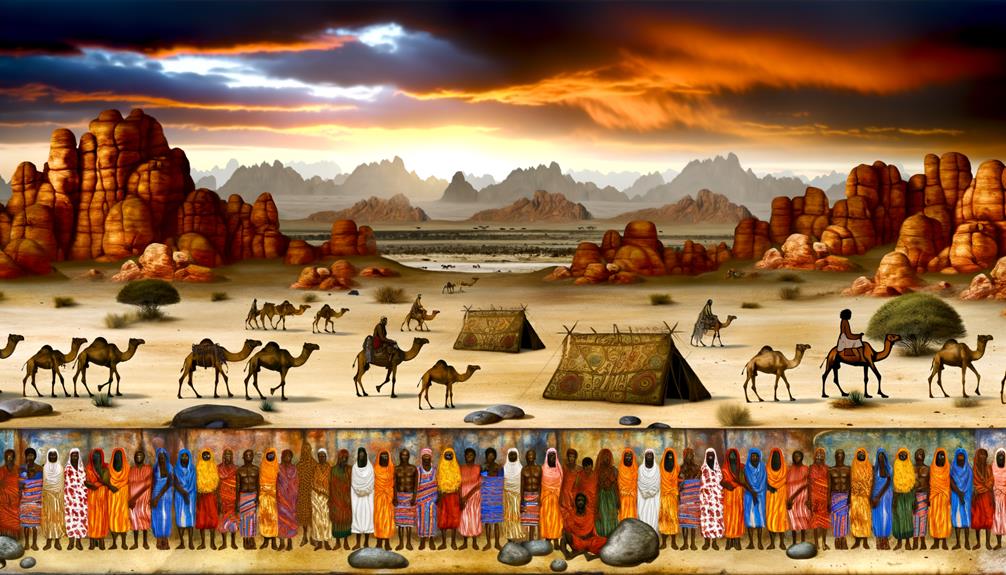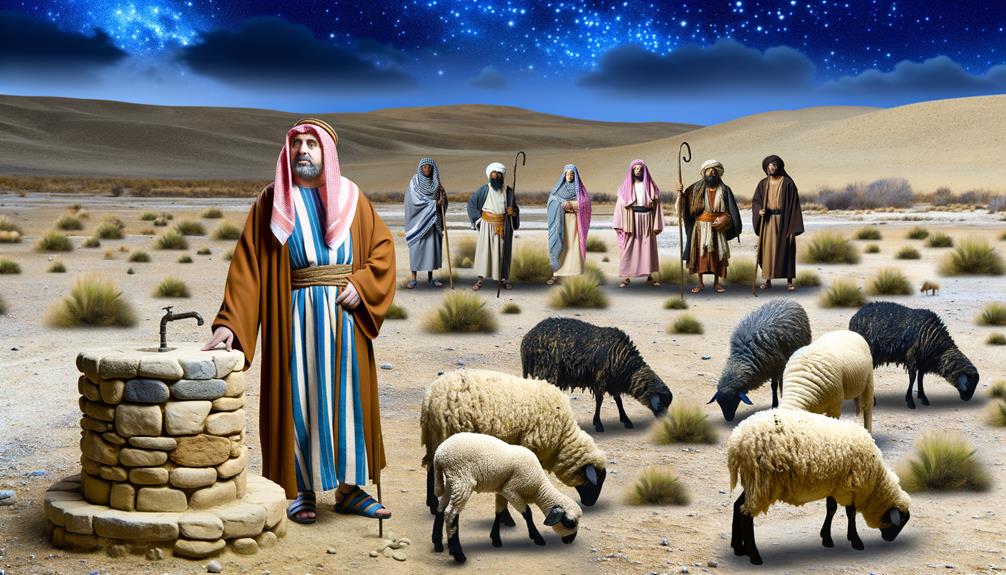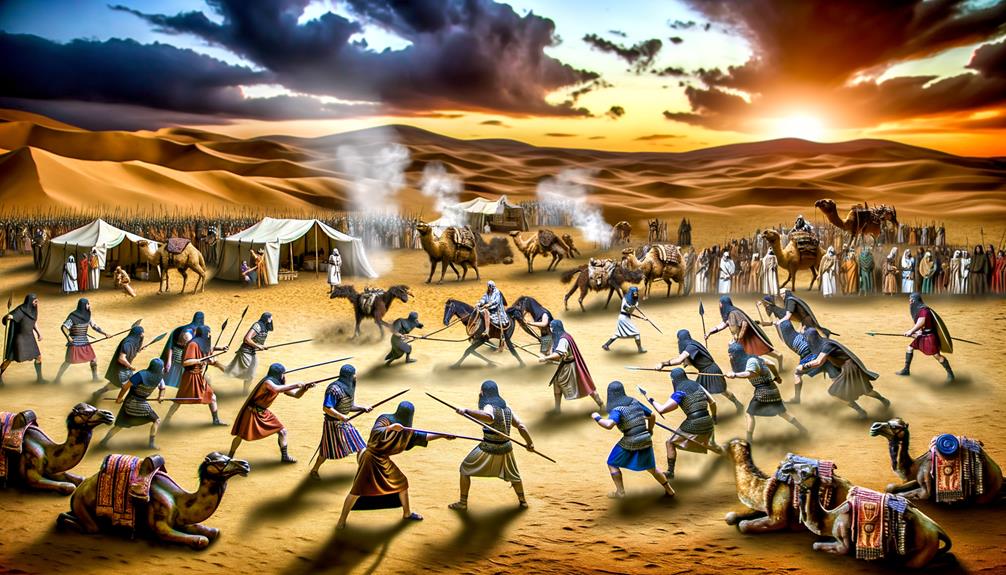Midian Meaning in the Bible: Strife and Redemption
Midian, referenced extensively in the Bible, holds significant historical, narrative, and symbolic roles. Situated in the northwestern Arabian Peninsula, it was an essential trade and mining hub.
Biblically, the Midianites are depicted as both adversaries and allies of Israel, underlying complex socio-political and spiritual dynamics. Key biblical figures, such as Moses, interacted intimately with Midianites, shaping their leadership journeys.
Midian symbolizes external threats and spiritual challenges, accentuating themes of idolatry, divine judgment, and covenantal faithfulness. These layers contribute to a richer understanding of Midian’s multifaceted role within biblical texts.
To grasp these intricate dimensions further, one should consider the broader contextual narratives.

Midian Meaning in the Bible: Origins, Symbolism, and Significance
| Aspect | Details |
|---|---|
| Origin | Descendants of Midian, son of Abraham and Keturah (Genesis 25:1-2) |
| Location | Northwest Arabia, near modern-day Saudi Arabia and Jordan |
| Key Biblical Events | Moses fled to Midian; Israelites fought Midianites (Exodus 2, Numbers 31) |
| Symbolism | Represents trials, judgment, and sometimes spiritual refuge |
| Spiritual Lesson | Highlights God’s justice, transformation, and preparation for divine calling |
Historical Background of Midian

Situated in the northwestern region of the Arabian Peninsula, the ancient land of Midian played a significant role in the historical and cultural narratives of the Near East. Remarkably recognized for its strategic location, Midian served as an essential crossroads for trade routes connecting Egypt, Arabia, and Mesopotamia.
Archaeological evidence indicates that the Midianites were engaged in extensive copper mining and metallurgy, contributing to their economic prominence. In addition, the region’s topography, characterized by rugged mountains and arid valleys, fostered a distinct lifestyle centered around nomadic herding and oasis agriculture.
These geographical and economic factors collectively shaped Midian’s social structures and interactions with neighboring civilizations, laying a complex foundation for its later historical and religious significance.
Midian in the Old Testament

The historical and geographical backdrop of Midian provides an essential context for understanding its multifaceted role in the Old Scripture narrative. Located in the northwestern Arabian Peninsula, Midian was a region inhabited by a semi-nomadic people known for their pastoral and trading activities.
The Midianites frequently appear in the biblical text as both adversaries and allies of Israel, highlighting the complex interplay of relationships among ancient Near Eastern tribes.
Significant events, such as the Midianite oppression during the time of the Judges and their eventual defeat by Gideon, underscore the region’s strategic importance and the dynamic tensions within the biblical narrative.
The Midianites’ interactions with Israel reflect broader themes of divine judgment, covenantal faithfulness, and the unfolding of God’s redemptive plan.
Moses and the Midianites

Moses’ interaction with the Midianites provides a pivotal narrative that intertwines themes of exile, divine encounter, and leadership formation within the broader biblical context. After fleeing Egypt to escape Pharaoh’s wrath, Moses finds refuge among the Midianites, specifically with Jethro, a Midianite priest.
This period of exile serves as a transformative phase where Moses encounters the divine through the burning bush on Mount Horeb, marking his call to lead the Israelites out of bondage.
The Midianite environment, consequently, acts as a crucible for Moses’ development, shaping his identity and preparing him for his monumental leadership role. This narrative elucidates the significance of Midian as a setting for divine revelation and the honing of prophetic leadership in biblical tradition.
Midianite Conflicts and Alliances

Throughout biblical history, the Midianites oscillated between being formidable adversaries and tenuous allies of the Israelites, reflecting the complex dynamics of ancient Near Eastern socio-political relationships. Their interactions were marked by a series of conflicts and temporary alliances that shaped the historical narrative.
- Conflict: Significantly, the Midianites opposed Israel during the time of Gideon, resulting in substantial military confrontations (Judges 6-8).
- Alliance: Conversely, Moses’ marriage to Zipporah, daughter of the Midianite priest Jethro, signifies a period of cooperation and mutual benefit (Exodus 2:16-22).
These episodes underscore the fluctuating nature of Midianite-Israelite relations.
Symbolism of Midian

Symbolically, Midian represents both the external threats and internal challenges faced by the Israelites, encapsulating the broader themes of conflict, temptation, and divine judgment.
The Midianites, as depicted in biblical narratives, often served as instruments of divine retribution, bringing forth periods of suffering and subjugation that tested Israel’s faith and obedience. Their antagonistic role underscored the perpetual struggle between adherence to Yahweh’s covenant and the allure of idolatrous practices.
In addition, Midian’s representation of internal challenges is evident in episodes where Israelites succumbed to Midianite influence, leading to moral and spiritual decay.
Consequently, Midian functions as a multifaceted symbol, reflecting both the tangible adversities and the intangible spiritual battles within the wider biblical context.
Theological Implications of Midian

Theological examination of Midian reveals its profound role in elucidating the dynamics of divine justice, covenantal fidelity, and the perpetual tension between faithfulness and apostasy within the biblical narrative.
The Midianites often serve as instruments through which God’s righteousness and judgment are manifested, particularly in their interactions with the Israelites. This relationship can be explored through several critical theological lenses:
- Divine Retribution: Midian represents the consequences of idolatry and disobedience, as seen in Numbers 31.
- Covenantal Loyalty: The encounters with Midian highlight the Israelites’ struggle to maintain their covenant with Yahweh amidst external temptations.
These elements collectively underscore Midian’s significant theological implications.
Conclusion
The narrative of Midian in biblical texts, replete with complex interrelations and symbolic undertones, serves as an ironic evidence to humanity’s perpetual struggle with identity and morality.
Despite Midian’s portrayal as both a refuge and a nemesis, its ultimate fate underscores the transient nature of alliances and enmities.
Consequently, Midian emerges not merely as a historical entity but as a profound theological symbol, reflecting the intricate dynamics of divine-human interaction and the mercurial essence of human fidelity.






